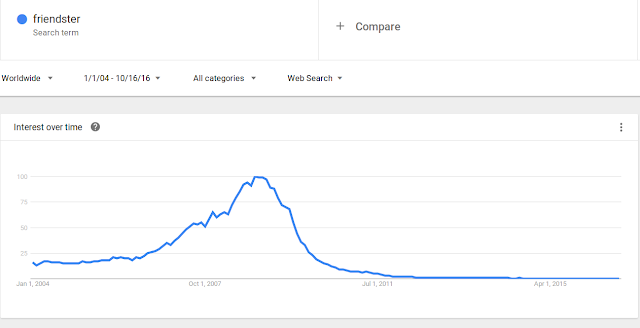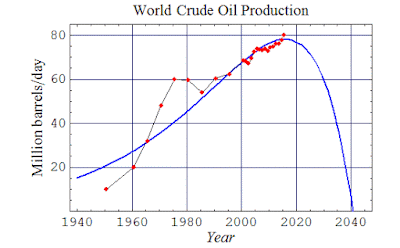Another Example of a Seneca Cliff
The results of a Google Trend search for “Friendster”, an old social network. It is a nearly perfect “Seneca Shape.” Ruin is rapid, indeed!
“Friendster” was a social network that, in many ways, pre-dated Facebook. Friendster collapsed rapidly, starting in around 2009, providing us with an impressive example of a “Seneca Shape“, a curve where decline is much faster than growth, or, as Seneca the philosopher said long ago, “ruin is rapid”.
The demise of Friendster has been studied in at least two recent papers. One by Garcia et al, (2013) “Social Resilience of online communities” and another by Yu et al., (2016) titled “System crash as dynamics of complex networks” These papers interpret the collapse in terms of the dynamic evolution of a network, whereas, earlier on, I had proposed a model where this specific shape could be derived from system dynamics. Basically, there must be more than one way to skin a platypus: both the studies cited are based on collective feedback effects, which is the crucial factor that makes collapses occur. So, network theory is more detailed, system dynamics one is more aggregated, but we are describing the same phenomenon, although from different viewpoints.
In both cases, anyway, we find that ruin is rapid. As long as it occurs to an obsolete social service, it is not a big problem. But if it were to occur to something massive and vital for civilization, such as the oil industry, then we could see something like this…. ouch…….

